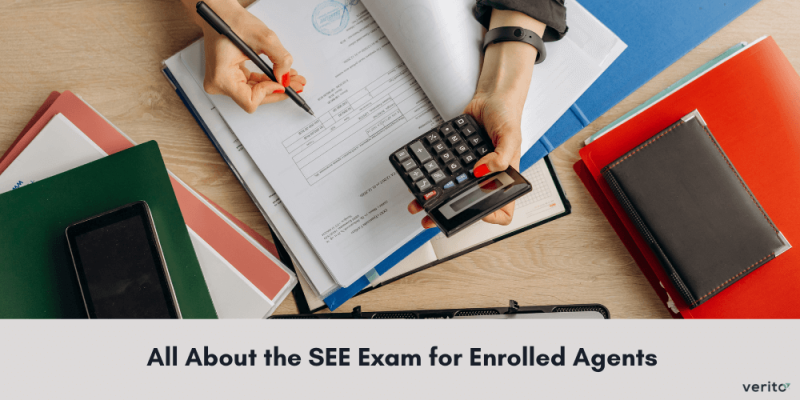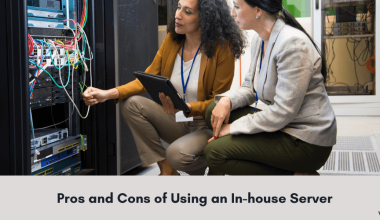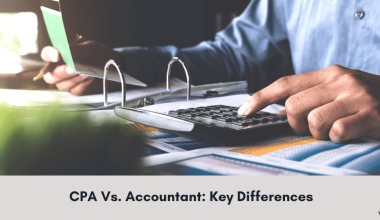Becoming an Enrolled Agent is a significant step towards a rewarding career in taxation and representation. At the heart of this journey lies the Special Enrollment Examination, or SEE – a pivotal milestone that serves as the gateway to obtaining EA status. For aspiring tax professionals, understanding the ins and outs of the SEE exam is paramount to success.
In this comprehensive guide, we will dive deeper into the SEE exam, shedding light on its significance, structure, and more. Whether you’re just beginning to contemplate the path of tax advocacy or you’re already on the road to becoming an Enrolled Agent, this blog can serve as your compass to deal with the intricacies of the SEE exam.
What is the SEE Examination?
The SEE, or Special Enrollment Examination is a test designed to assess the knowledge and competence of individuals aspiring to become Enrolled Agents. It is administered by the Internal Revenue Service (IRS) and serves as a crucial step in obtaining EA status, granting candidates the authority to represent taxpayers before the IRS.
At its core, the SEE evaluates candidates on a wide range of tax-related topics, spanning from individual and business taxation to ethics and representation practices. Through a rigorous series of questions, the exam rigorously assesses candidates’ understanding of tax law, regulations, and procedures, ensuring that capable Enrolled Agents possess the expertise necessary to navigate the complexities of the U.S. tax system.
Get everything you need to know about this IRS-authorized credential in our Enrolled Agents Guide.
Different Parts of the SEE Examination
The SEE examination is structured into three distinct parts, each focusing on specific aspects of taxation and representation. Understanding the content and format of each part can help with adequate preparation and success in the exam. Let’s delve into the details of each section:
Part 1: Individuals
Part 1 of the SEE examination concentrates on individual taxation, covering topics, such as income, deductions, credits, and tax calculations. Candidates are tested on their understanding of tax laws and regulations applicable to individual taxpayers, including filing requirements, taxable income determination, and tax credits and deductions. This section assesses candidates’ ability to deal with various tax scenarios, ranging from straightforward ITRs to complex situations involving itemized deductions, capital gains, and alternative minimum tax. Passing Part 1 requires a solid foundation in individual taxation principles and the ability to apply them to diverse taxpayer profiles.
Part 2: Businesses
Part 2 focuses on taxation related to businesses, encompassing entities such as partnerships, corporations, and sole proprietorships. Candidates are tested on their knowledge of business tax laws, including entity classification, income determination, deductions, and credits applicable to business entities. This section evaluates candidates’ proficiency in addressing the tax implications of business operations. Passing this Part of the SEE examination necessitates a comprehensive understanding of business taxation principles and the ability to interpret financial information.
Explore how to become an IRS-authorized tax professional in our EA Certification Complete Guide.
Part 3: Representation, Practices, and Procedures
Part 3 of the SEE examination assesses candidates’ understanding of tax representation practices and procedures before the IRS. Topics covered in this Part include taxpayer representation, ethics, preparer responsibilities, and IRS practices/procedures. This section is meant to evaluate candidates’ knowledge of the rules and regulations governing tax practice, including taxpayer rights and the responsibilities of Enrolled Agents.
Passing this part requires a solid understanding of professional standards and IRS procedures to represent taxpayers in compliance matters. Once you have familiarized yourself with the content and structure of each part of the SEE examination, you can plan your preparation and approach each section with confidence.
5-Step Process to Appear in and Pass the SEE Examination
Step 1: Create an Account with Prometric
Before you can schedule to appear for the SEE exam, you must create an account with Prometric – the testing service provider for the SEE. Follow these step-by-step instructions to create your account:
- Navigate to the Prometric website dedicated to the SEE examination registration.
- Locate the option to ‘Create Account’ or ‘Register’.
- Provide the required personal information, including your full name, email address, and contact details.
- Create a unique user ID and password to access your Prometric account.
- Once your account is successfully created, you will receive a confirmation email containing your login credentials and further instructions.
It’s essential to keep your login credentials secure and easily accessible, as you will need them to schedule your exam and receive important updates regarding your examination appointment.
Step 2: Explore the Candidate Information Bulletin
Before scheduling your SEE exam, you need to review the Enrolled Agent SEE Candidate Information Bulletin. This comprehensive document contains essential information about the examination and outlines the process for becoming an Enrolled Agent. Here’s what you can expect to find in the Candidate Information Bulletin:
- Insights into the structure, format, and content of the SEE examination, including the number of test sections, question types, and time allocation for each part
- Examination policies, including rules regarding acceptable identification, examination scheduling, rescheduling, and cancellation procedures
- Content outlines for each part of the SEE examination, outlining the specific topics and subtopics covered in each section
- Steps to register for the SEE examination, including instructions for scheduling your examination appointment through Prometric, and more Understand the key differences between these two tax professionals in our guide on Enrolled Agents vs. CPAs.
Step 3: Go Through the Exam Content Outline
Before diving into your preparation for the SEE examination, it would be best if you take the time to thoroughly review the exam content outlines. These outlines can provide a detailed breakdown of the topics and subtopics covered in each part of the SEE, offering invaluable guidance for structuring your study plan and focusing your efforts effectively.
By familiarizing yourself with the content outlines, you’ll gain clarity on the specific areas of taxation and representation that will be tested in each section of the exam. This will enable you to prioritize your study materials, focus on areas where you may need additional reinforcement, and ensure comprehensive coverage of all exam content.
Step 4: Set Up an Exam Preparation Plan
With a clear understanding of the exam structure and content outlines, it’s time to start your SEE preparation journey. Strategic preparation can help you succeed in passing the examination and achieve your goal of becoming an Enrolled Agent. Here’s how you can prepare effectively:
- Develop a comprehensive study plan that outlines your study goals, timelines, and resources. Allocate dedicated time each day or week for studying, ensuring consistent progress leading up to your exam date.
- Gather relevant study materials, including textbooks, review courses, practice exams, and online resources. Choose materials that align with the content outlines and cater to your learning style and preferences.
- Identify your areas of weakness based on the exam content outlines and allocate more time and effort to strengthen these areas. Utilize practice questions and quizzes to gauge your understanding and track your progress.
- Practice answering questions under timed conditions. This will help you simulate the exam environment and enhance your time management skills. Pace yourself appropriately to ensure you can complete each section of the SEE examination within the allotted time.
- Regularly review your study materials and revisit challenging topics to reinforce your understanding.
- Seek support from peers, mentors, or professional tutors if you encounter difficulties or have questions during your preparation.
Step 5: Schedule Your Exam
The SEE is divided into three parts, and you can take these parts in any order that suits you best.
Examination Locations:
- United States: Prometric test centers are conveniently located in most major metropolitan areas across the United States. These centers typically offer exam sessions on Saturdays, with some locations also providing options for Sunday and evening testing.
- International: International testing for the SEE is available at select dates and locations (subject to change).
Here’s how you can schedule your exam:
- Access your Prometric account using your login credentials.
- Select the ‘Schedule Now’ option under ‘Ready to schedule’.
- Select your preferred test center, date, and time for the exam session.
- Proceed to pay for your exam to complete the scheduling process.
- After scheduling your exam, carefully review the appointment confirmation email to ensure accuracy regarding the exam, date, time, and testing location.
If any changes are needed, you can contact Prometric at 1-800-306-3926 (toll-free) or +1 443-751-4193 (toll) during operating hours.
More About the Break Policy of the SEE Examination
During the SEE examination, candidates are allotted one scheduled 15-minute break placed between sections of the examination. Upon completing questions 1-50 and acknowledging the completion of section one, candidates can pause the test timer for up to 15 minutes.
Once the break is initiated, access to the first section’s content, including the ability to make changes to answers, is no longer available. Candidates may choose to decline the scheduled break and continue testing uninterrupted. However, if they opt to take the scheduled break, they must adhere to all security protocols when leaving the testing room.
Should candidates not return and begin the second section (questions 51-100) of the exam before the 15 minute break, the exam clock will restart. While candidates are permitted to take additional unscheduled breaks, the exam clock will not stop for unscheduled breaks.
FAQs
How many questions are included in each section of the SEE exam?
Every part of the Special Enrollment Examination consists of 100 questions.
What is the duration allocated for each section of the examination?
Each part of the examination spans 3.5 hours in total. However, the actual seat time provided is 4 hours, which includes a tutorial, survey, and one scheduled 15-minute break.
What kind of resources are available to help me prepare for the SEE examination?
To prepare for the examination, you can consider consulting resources, such as the Internal Revenue Code, Treasury Department Circular 230, IRS publications, tax forms, and their instructions. These materials are accessible online at IRS.gov. Additionally, you can explore commercially available study materials and preparation courses tailored specifically for the SEE to enhance your readiness.
On what basis is the examination structured in terms of tax law?
The examination primarily relies on the Internal Revenue Code, forms, and publications, as updated until December 31, 2023. Unless specified otherwise, all questions pertain to the tax year 2023. Candidates need to refrain from considering any legislative changes or court rulings implemented after December 31, 2023.
Is there a specific sequence for taking each part of the SEE examination?
No, candidates have the flexibility to take the examination parts in any order they prefer.
What is the limit on the number of attempts allowed for each part within a testing window?
Candidates are permitted to take each part of the examination up to four times during the testing window, which spans from May 1 to February end.















1 comment
Comments are closed.